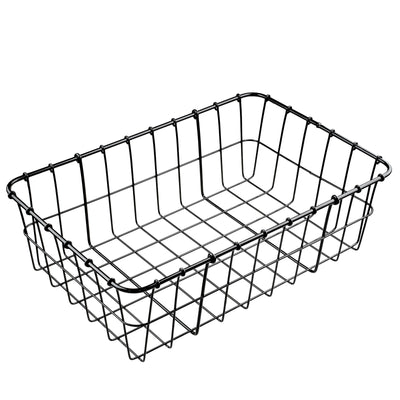Rack Packing: A Trendy Term for Timeless Touring

In the world of cycling, it's amazing how something old can be repackaged, sprinkled with a dash of modern marketing magic, and presented as the latest and greatest innovation. Enter "rack packing"—a term that's making some waves in the cycling community. But let's cut through the jargon and call it what it is: the same old rack and panniers setup that bicycle tourists have been using for decades.
The Not-So-New Kid on the Block
It's interesting to look at various "Rigs of" galleries on Bikepacking.com of how to approach off-road races over the years. Up until a couple years ago, racks were completely shunned with folks opting for pure bikepacking-style bags strapped from everywhichwhere on the bike. The idea is that hard connections using racks are more likely to break when bumped around off-road. This concept even bled into touring on pure road bikes with the style dubbed "road packing".

For those of us who have been cycling long enough to remember when "bike packing" was simply called "touring," the rise of rack packing is mostly amusing. With a bit of marketing spin, rack packing is being sold as a revolutionary approach to long-distance cycling.

The concept is straightforward: attach a rack to your bike, hang some panniers off it, and hit the road. This isn't rocket science; it's the bread and butter of bike touring. Panniers, those trusty saddlebag-like containers, have been faithfully serving cyclists since the 19th century. They distribute weight evenly, keep your gear accessible, and transform your bike into a pack mule ready for adventure.

What really grinds my gears is the way this rebranding overlooks the rich history and practical wisdom accumulated by generations of bicycle tourists. By dressing up the old rack and panniers system in a fancy new name, we risk forgetting the lessons learned by those who came before us.
Let's Keep It Real
Now, don't get me wrong. I'm all for innovation and improvements in cycling gear. But let's give credit where credit is due. The cyclists who have been touring for decades with their trusty racks and panniers deserve recognition, not a slick marketing campaign that pretends to reinvent the wheel. Or maybe they were simply visionaries.

Scott touring Sweden in 1993
In the end, whether you call it rack packing or simply touring, the joy of loading up your bike and hitting the open road remains the same. Let's celebrate the timeless tradition of bicycle touring and appreciate the gear that has carried us through countless miles and unforgettable adventures. After all, it's not the name that matters—it's the journey.

So, here's to racks and panniers, rack packing, bike packing, road packing, light packing, and everything in between. May your wheels keep turning and your adventures never end. Happy riding!







I agree that whoever invented the term “rack packing” needs a punch in the man sack. But if you are really touring off road you will undoubtedly see the point – and necessity of – bags strapped to your bike. Done right, bikepacking gear is lighter, quieter (important for me), structurally superior, and more versatile than a traditional rack and pannier set-up. I come from a traditional touring background (I’m 67), prefer touring in the most remote and wild places I can go, and I am saddened to see my fellow geezers deriding the actual bikepacking style, not just the vulgar marketing.
It seemed to me that the “bike packing” style of multiple bags and no racks arose from the use of suspension MTB’s for off-road touring.
It bewilders me a bit when I see a hard tail still using a giant bag off the rear seat that could sit securely atop a rear rack.
But I’ll try to keep an open mind- maybe I’ll try a frame bag someday, and I bought a MSR tent that straps to the handlebars, although I just put it a rear pannier past tour.
One of my favorite sets ups has been front panniers on low rider racks (35 year old Blackburn!) and items on the rear rack.
A long-time bike tourist friend of mine coined the phrase “poodle-packing” for the way that bike-packing little bags strapped everywhere resemble the outrageous haircuts of French Poodles.
For those who think bikepacking (let alone “rack packing”!) is something new have a look at this picture of Arthur Charles Jeston Richardson from the state library of Western Australia.
https://slwa.wa.gov.au/images/countryman/000739d.jpg
This was taken just after a ride from Coolgardie in Western Australia to Adelaide South Australia by bicycle in 1897. Arthur Richardson was the first person to circumnavigate Australia on a bicycle in 1899 riding 11,500 miles (18,507 km)
Last year I rode the Pacific Coast from Seattle to Salinas, and all the younger riders I met were “bikepacking”, while us few old farts were using panniers. While the former approach may have some merit for off-road touring, I see no reason to do it when riding on smooth well-surfaced roads. Also, where do those folk keep their water? I can carry almost a gallon in my three frame-mounted bottles, so how would I carry that much water if I were “bikepacking”? I’ve toured on three continents using racks and panniers, and have never wished for a better way to carry everything. After working for fifteen tears in the bike biz I agree that it’s controlled by marketing “experts” who don’t know (or care) what happened before them.
Leave a comment